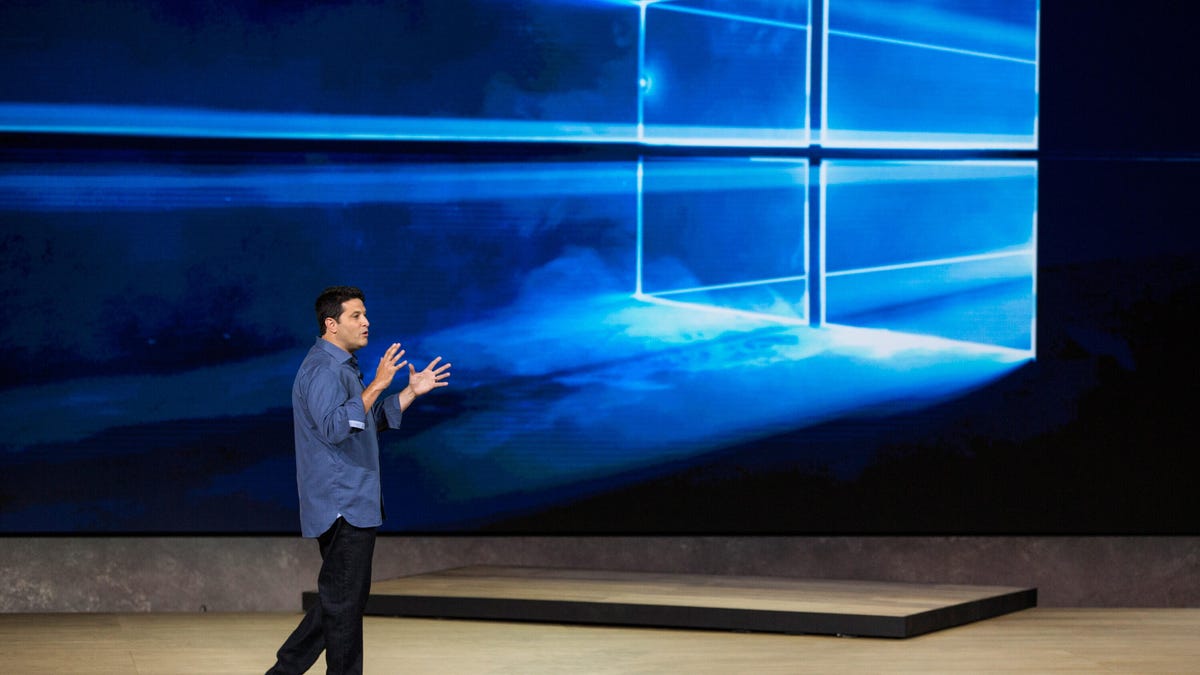Windows 10 turned 10 years old this week. It’s a bittersweet birthday, as it marks the beginning of a steady march toward a forced retirement that will begin with the official end of support on October 14, 2025.
For a computer operating system, time is measured in something roughly equivalent to dog years, and by that measure, 10 years is an eternity. Windows 10, you are old.
Also: Can’t upgrade your Windows 10 PC? You have 5 options before EOS
To mark the occasion, I went back and read some of my coverage of Windows 10 in its first five years, starting with my initial review, “Windows 10: A new beginning”, and continuing with the annual report cards I wrote on each successive anniversary. My last report card was in 2020: “Windows 10 at five: Don’t get too comfortable, the rules will change again.”
The early years
Windows 10 had one job: erasing the memory of Windows 8 from the minds of hundreds of millions of Microsoft customers. It succeeded at that task, becoming Microsoft’s most widely used product ever. But the road to that success was anything but smooth.
It’s hard to remember now, but those first five years were absolutely chaotic. Windows 10 was still running on smartphones and small tablets. Microsoft was begging developers to write Universal Windows Platform (UWP) apps.
Also: How to get free Windows 10 security updates through October 2026: Two ways
Two years after Windows 10’s debut, Microsoft became obsessed with 3D technology, stuffing the so-called Windows 10 Creators Update (version 1703) with tools like Paint 3D and (I am not making this up) the Mixed Reality Portal — tools that Microsoft delivered to every Windows 10 PC and that no one ever used. It was a complete disaster.
Meanwhile, Microsoft was pushing out major feature updates every six months. Version 1809 (the big feature update in the second half of 2018) was so buggy that it had to be yanked from the Windows Update servers, and the company eventually issued a public apology and changed its update procedures to avoid a recurrence of that nightmare.
Microsoft also got rid of the confusing version numbers in 2020, after realizing that they were releasing a version of Windows with a version name of 2004 in 2020. The new naming convention (21H2, etc.) was much easier to comprehend.
The dawn of Windows as a service
Windows 10’s chaos years ended in 2021, right around the time Microsoft announced Windows 11. Windows 10 version 21H2 marked the start of yearly updates for Windows 10, a policy that has continued with Windows 11. Version 22H2 is the official end of the road for Windows 10. Part of the appeal of Windows 10 in the modern era has been the fact that it was essentially preserved in amber five years ago, and Microsoft hasn’t mucked with it in all that time.
Also: How to upgrade your ‘incompatible’ Windows 10 PC to Windows 11: Two ways
Windows 10 marked the beginning of the “Windows as a service” era. Although Microsoft marketed Windows 11 as another “big bang” release, it really was just a feature update and a UX refresh for Windows 10. Well, as long as you had compatible software.
Part of the affection that longtime PC users have for Windows 10 today is a direct result of Microsoft’s benign neglect of the OS after it shifted all its developmental priorities to Windows 11 and its bevy of Copilot-branded AI toys. Windows 10 stays the same, month in and month out, year in and year out. Microsoft doesn’t try to stuff it with new features, and they don’t move anyone’s cheese with those monthly updates.
After reviewing those historical posts, I was struck by the number of conspiracy theories that simply haven’t panned out. Microsoft’s collection of telemetry data was going to destroy your privacy. Windows 10 users were going to be hit with subscription fees. C’mon, they kept giving away free upgrades to Windows 10 for eight years after saying it was a limited, one-year offer.
Also: I use Edge as my default browser – but its new AI mode is unreliable and annoying
My initial review of Windows 10 praised the Cortana feature in Windows 10. Cortana was the Siri-like assistant that promised to pull together all my personal data and give me a daily briefing that got me set for the day. That was a major fail, but if you venture into Microsoft HQ, I am sure you will find that Cortana crawled so Copilot could run. (They are both, after all, three-syllable words that begin with C. I don’t think that’s a coincidence.)
The legacy of Windows 10
Today, PCs are generally reliable, in no small measure because they are copying the models that Apple (MacBook Air and MacBook Pro) and Microsoft (Surface Laptop and Surface Pro) standardized on over the past decade. The software that runs those PCs is relying on a dizzying variety of local hardware and cloud-based resources. We would have never arrived at this juncture if it hadn’t been for Windows 10.
So, happy birthday, Windows 10. You won’t have any more, but that’s OK. Enjoy your retirement. Go play some golf or something.
